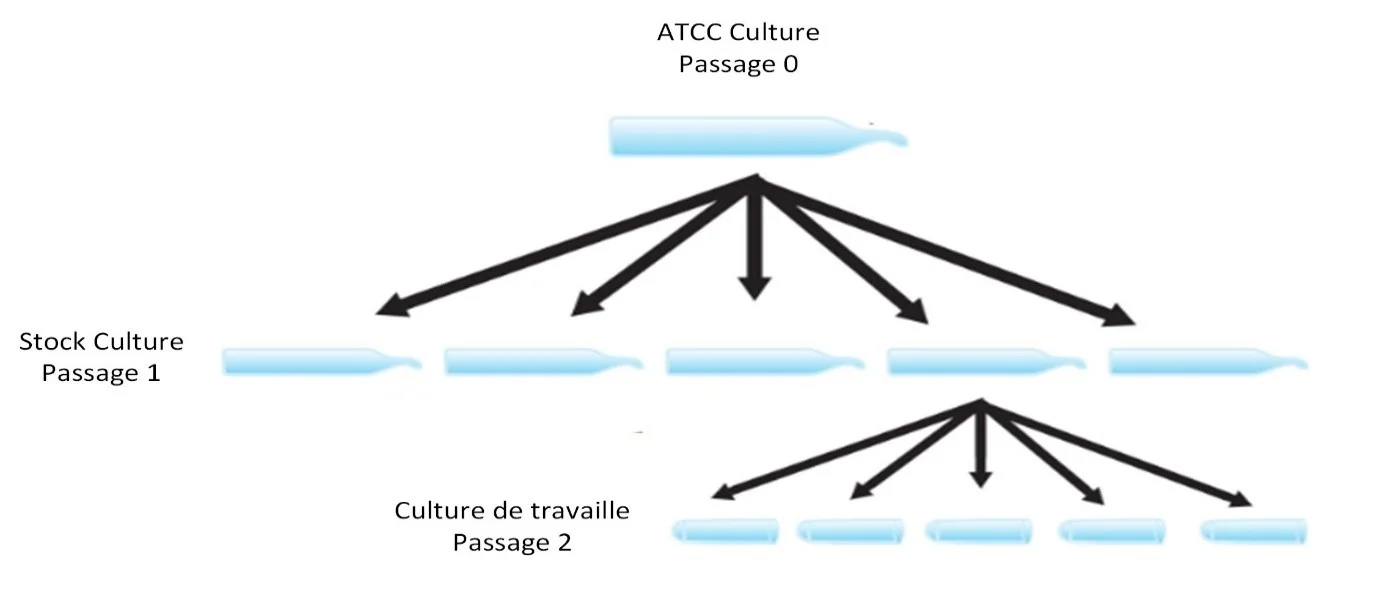☰ Summary :
Ⅰ. Definition | Type strain | Reference strain
The "typical bacterial strain": is the strain on which the description of a species is based and isnot always the most typical representative of a species. Typical strains serve as fixed reference points for assigning bacterial names.
J.P. Euzéby «In bacteriology, a species is constituted by its type strain and by all the strains considered close enough to the type strain to be included within the same species».
Reference bacterial strains are defined as any microorganism acquired from a recognized culture collection. It is the standard that allows it to be compared to other strains.
Ⅱ. General consideration
Different names are assigned to the reference strains, in various publications of the CLSI (Clinical & Laboratory Standards Institute) and the USP (United States Pharmacopeial), these cultures are called control strains, standard cultures, reference strains, strains of assay and quality control strains.
There are several designations depending on the organization: ATCC (American Type Culture Collection), ATCC (Culture Collection of University of Gothenburg) and NCTC (National Collection of Type Cultures), are then listed
Example: Strain NCTC 9001 (Escherichia coli) is the same as strain ATCC 11775.
Ⅲ. Maintenance of cultures and number of passes
There is still some confusion, especially when determining the number of subcultures allowed beyond the reference strain.
According to USP, “A passage is defined as the transfer of organisms from a viable culture to a fresh medium. Any form of subculture is considered a transfer / passage. "
Seed lot system : Seed lot system: The reference strain is subcultured in several replicates at the same time, all in a single pass (the first “stock culture” pass). These replicates of the mother culture are subcultured (the second passage “working cultures”) to make replicas of working cultures.

👉 Work cultures are often kept in a slanted fashion, and it is these subcultures that raise questions about the number of passes.
☰ How many passages are recommended or accepted in the laboratory?
It is recognized that the number of passages should be minimized to reduce as much as possible the possibility of phenotypic variations, genetic drift and contamination, but standards organizations differ in the number of acceptable passes.
According to USP standards: Best Laboratory Practices in Microbiology states that "the number of transfers of working control cultures should be followed to avoid excessive subculture which increases the risk of alteration or phenotypic mutation"
The USP clearly states that working cultures used for testing should not have more than five passages of the ATCC reference culture. USP 36-NF 31 states: “Viable microorganisms used in the test should not be removed more than five passages from the original ATCC culture. "

Ⅳ. Storage
Storage temperature (stock strains and working strains) can affect growth characteristics and viability.
The CLSI recommendations include storage at -50 ° C to -70 ° C for one year or below -70 ° C indefinitely, or -20 ° C or less (preferably below -70 ° C) for a prolonged storage.
Storage of working cultures is recommended at 2 ° C to 8 ° C for up to four weeks.
USP 36-NF 31 recommends storage in liquid nitrogen or a mechanical freezer below −50 °